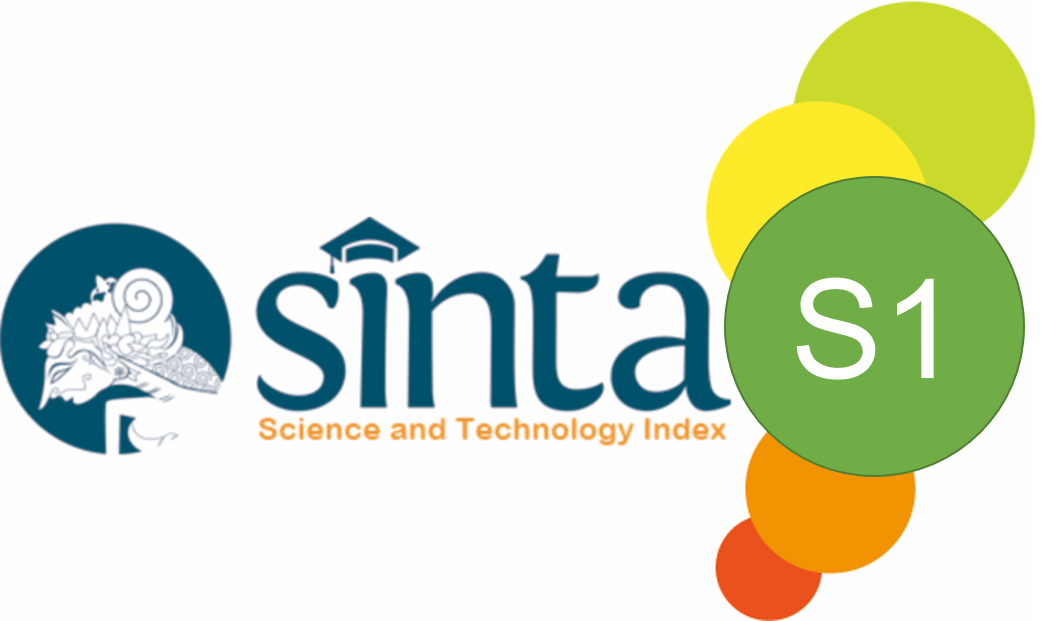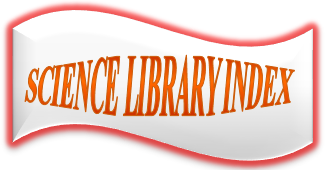Developing Information Technology in OpenCourseWare: From Movements to Opportunities in Asia
Abstract
This paper aims to summarize and analyze the Developing Information Technology in Open CourseWare (OCW) movements and new opportunities in Asia in the context of supporting the education process in higher education that is in accordance with the recent demands for graduate competency supported by IT innovation. The review method is carried out in 3 stages: searching and downloading articles, filtering and sorting, and final screening. The results of this review show that the OCW movement in Asia is growing rapidly, among others, due to IT innovation, stakeholder commitment, public awareness, and the need for quality teaching materials. In the era of web 5.0 technology, lecturers must have the competencies to develop electronic activities through the Web that make students truly active so that online learning actually takes place rather than the electronic reading process. The impact of IT innovation has brought drastic changes in the field of education in the learning process has become an effective driving tool for improving learning outcomes and achieving educational goals, one of the most recent innovations is OCW. OCW movement in Asia has progressed rapidly and significantly, although they experience transformations in accordance with technological developments and needs in the field.
Keywords
Full Text:
PDFReferences
Abelson, H. (2008). The creation of OpenCourseWare at MIT. Journal of Science Education and Technology, 17(2), 164–174.
Alevizou, G. (2015). From OER to MOO Cs: Critical perspectives on the historical mediation trajectories of open education. International Journal of Media and Cultural Politics, 11(2), 203–224.
Amelia, N., Abdullah, A. G., & Mulyadi, Y. (2019). Indonesian journal of science, and technology meta-analysis of student performance assessment using fuzzy logic, 4(1), 74–88.
Aoki, K. (2010). The Use of ICT and e-Learning in higher education in Japan. International Journal of Social, Behavioral, Educational, Economic, Business and Industrial Engineering, 4(6), 986–990.
Elias, M., Lohmann, S., & Auer, S. (2016, September). Fostering accessibility of OpenCourseWare with semantic technologies–a literature review. In International Conference on Knowledge Engineering and the Semantic Web (pp. 241-256). Springer, Cham.
Barrett, B., Grover, V., Janowski, T., van Lavieren, H., Ojo, A., & Schmidt, P. (2009). Challenges in the adoption and use of OpenCourseWare: experience of the United Nations University. Open Learning: The Journal of Open and Distance Learning, 24(1), 31–38.
Benito-Osorio, D., Peris-Ortiz, M., Armengot, C. R., & Colino, A. (2013). Web 5.0: the future of emotional competences in higher education. Global Business Perspectives, 1(3), 274–287.
Bissell, A. (2009). Permission granted: open licensing for educational resources. Open Learning: The Journal of Open and Distance Learning, 24(1), 97–106.
Castaño Muñoz, J., Redecker, C., Vuorikari, R., & Punie, Y. (2013). Open education 2030: Planning the future of adult learning in Europe. Open Learning: The Journal of Open, Distance and e-Learning, 28(3), 171-186.
Chakravarty, R. & Kaur, S. (2008). OpenCourseware : Learning beyond classroom. Trends and Strategic Issues for Libraries in Global Information Society, Chandigarh, India, 18-19 March 2008, 407. https://repository.arizona.edu/handle/10150/106151
Finkelstein, L. S. (2012). Education in Indonesia. Far Eastern Survey, 20(15), 149–153.
Friesen, N., & Murray, J. (2013). “Open learning 2.0”? Aligning student, teacher and content for openness in education. E-Learning and Digital Media, 10(2), 200–207.
Ghosh, S. B., & Kumar Das, A. (2007). Open access and institutional repositories — A developing country perspective: A case study of India. IFLA Journal, 33(3), 229–250.
Guo, Y., Zhang, M., Bonk, C. J., & Li, Y. (2015). Chinese faculty members’ Open Educational Resources (OER) usage status and the barriers to OER development and usage. International Journal of Emerging Technologies in Learning, 10(5), 59–65.
Hajri, H., Bourda, Y., & Popineau, F. (2017). MORS: A system for recommending OERs in a MOOC. Proceedings of IEEE 17th International Conference on Advanced Learning Technologies, ICALT 2017, 50–52. https://doi.org/10.1109/ICALT.2017.89
Hakim, S. (2017). Supporting access to open education resources and massive open online courses for high school students of New Zealand. E-Learning and Digital Media, 14(4), 244–253.
Hammer, S. (2013). Glennie, Jenny et al ed (2012) Open educational resources and change in higher education Commonwealth of learning (Vancouver) isbn 978-1-894975-53-7 291 pp cdn $12 (or free download) http://www.col.org/resources/publications/Pages/detail.aspx?PID=412 . British Journal of Educational Technology, 44(2), E65–E66.
Hilton, J., Wiley, D., Stein, J., & Johnson, A. (2010). The four ’R’s of openness and ALMS analysis: Frameworks for open educational resources. Open Learning, 25(1), 37–44.
Hu, E., Li, Y., Li, J., & Huang, W.-H. (2015). Open educational resources (OER) usage and barriers: a study from Zhejiang University, China. Educational Technology Research and Development, 63(6), 957–974.
Ito, A. (2008). Current status of CCS in Japan. FutureGen Workshop 2008, Tokyo, Japan, (August), 97–102. Retrieved from https://www.scopus.com/inward/record.uri?eid=2-s2.0-84896862313&partnerID=40&md5=596f0aab2fac13bb11c610ea7e740f36
James, R., & Bossu, C. (2014). Conversations from south of the equator: Challenges and Opportunities in OER across Broader Oceania. RUSC. Universities and Knowledge Society Journal, 11(3), 78.
Johansen, J., & Wiley, D. (2011). A sustainable model for OpenCourseWare development. Educational Technology Research and Development, 59(3), 369–382.
Jung, I., & Latchem, C. (2007). Assuring quality in Asian open and distance learning. Open Learning: The Journal of Open and Distance Learning, 22(3), 235–250.
Karunanayaka, S. P., & Naidu, S. (2018). Designing capacity building of educators in open educational resources integration leads to transformational change. Distance Education, 39(1), 87–109.
Kumar, M. S. V. (2009). Open educational resources in India’s national development. Open Learning: The Journal of Open, Distance and e-Learning, 24(1), 77–84.
Lee, M. M., Lin, M. F. G., & Bonk, C. J. (2007). OOPS, turning MIT opencourseware into Chinese: An analysis of a community of practice of global translators. International Review of Research in Open and Distance Learning, 8(3), 1–13.
Morris, R. D. (2011). Web 3.0: Implications for online learning. TechTrends, 55(1), 42–46.
Prasetyo, E. (2017). Detection of Mango Tree Varieties Based on Image Processing. Indonesian Journal of Science and Technology, 1(2), 203.
Rambe, P., & Moeti, M. (2017). Disrupting and democratising higher education provision or entrenching academic elitism: towards a model of MOOCs adoption at African universities. Educational Technology Research and Development, 65(3), 631–651.
Rho, S., & Chen, Y. (2016). Human-centric information technology and applications towards web 3.0. New Review of Hypermedia and Multimedia, 22(3), 167–168.
Rhoads, R. A., Berdan, J., & Toven-Lindsey, B. (2013). The open courseware movement in higher education: Unmasking power and raising questions about the movement’s democratic potential. Educational Theory, 63(1), 87–110.
Rodríguez, G., Pérez, J., Cueva, S., & Torres, R. (2017). A framework for improving web accessibility and usability of Open Course Ware sites. Computers and Education, 109, 197–215.
Rohmah, A. A., & Rachmawati, R. (2019). Utilization of quality of information system for administration services based on ICT in Patehan, Kraton, Yogyakarta. Indonesian Journal of Science and Technology, 4(1), 55.
Rohs, M., & Ganz, M. (2015). MOOCs and the claim of education for all: A disillusion by empirical data. International Review of Research in Open and Distance Learning, 16(6), 1–19.
Ros, S., Hernández, R., Read, T., Rodrı, M., Pastor, R., & Dı, G. (2014). UNED OER experience: From OCW to open UNED. IEEE Transactions on education, 57(4), 248-254.
Saripudin, U., Djohar, A., Rohendi, D., & Abdullah, A. G. (2018). Literacy and benefits of OER concept for prospective vocational high school teachers. IOP Conference Series: Materials Science and Engineering, 434(1), 012279.
Shelton, B. E., Duffin, J., Wang, Y., & Ball, J. (2010). Linking open course wares and open education resources: creating an effective search and recommendation system. Procedia Computer Science, 1(2), 2865–2870
Sheu, F., & Shih, M. (2017). Evaluating NTU’s OpenCourseWare project with Google Analytics: User characteristics, course preferences, and usage patterns. The International Review of Research in Open and Distributed Learning, 18(4), 1–12.
Smith, M. S., & Casserly, C. M. (2006). The promise of open educational resources. Change: The Magazine of Higher Learning, 38(5), 8–17.
Stracke, C. M. (2017). Open education and learning quality: The need for changing strategies and learning experiences. 2017 IEEE Global Engineering Education Conference (EDUCON), (April), 1049–1053.
Tovar, E., Dimovska, A., Piedra, N., & Chicaiza, J. (2013). OCW-S: Enablers for building sustainable open education evolving OCW and MOOC. IEEE Global Engineering Education Conference, EDUCON, 1262–1271.
Wiley, D., Bliss, T. J., & McEwen, M. (2014). Open educational resources: A review of the literature. In Handbook of Research on Educational Communications and Technology (pp. 781–789). New York, NY: Springer New York. https://doi.org/10.1007/978-1- 4614-3185-5_63
DOI: https://doi.org/10.17509/ijost.v5i3.24886
Refbacks
- There are currently no refbacks.
Copyright (c) 2020 Indonesian Journal of Science and Technology

This work is licensed under a Creative Commons Attribution-ShareAlike 4.0 International License.
Indonesian Journal of Science and Technology is published by UPI.
View My Stats





















